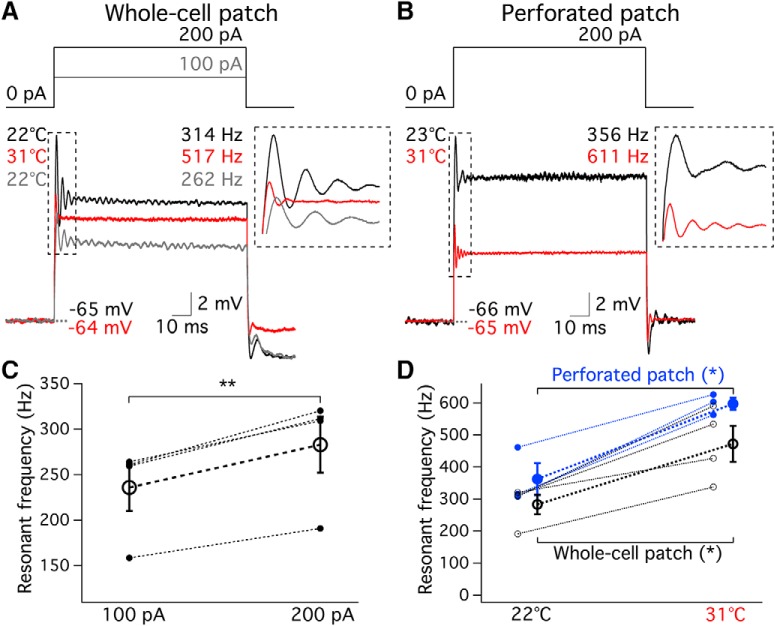Figure 7.
Hair cell resonant frequency increases at high temperature. A, Electrical resonance was elicited by stimulating hair cells with a current step in whole-cell patch. Black and red traces were evoked by a 200 pA current step at room and high temperature, respectively. Gray trace was evoked by a 100 pA current step at room temperature. Each of these three traces is the average response from three hair cells. Resonant frequencies were calculated by fitting the first 20 ms membrane voltage changes with a sine wave function (dashed line box inset). The resonant frequencies of black, red, and gray traces were 314, 517, and 262 Hz, respectively. B, Electrical resonance of hair cells was elicited by a 200 pA current step in gramicidine-mediated perforated patch. Black and red traces were averaged of 3 cells recorded at room and high temperature, respectively. The resonant frequencies of black and red traces were 356 and 611 Hz, respectively. C, Resonant frequencies of hair cells evoked by 100 pA current steps were lower than those evoked by 200 pA current steps (n = 4, p = 0.004). D, Results of both whole-cell (black, n = 4, p = 0.017) and perforated (blue, n = 3, p = 0.025) patch recordings showed that resonant frequency of hair cells increased significantly at high temperature. There was no statistical difference between resonant frequencies measured by whole-cell patch or perforated patch at either room (p = 0.80, unpaired t test) or high (p = 0.56, unpaired t test) temperature. *p < 0.05, **p < 0.01.

